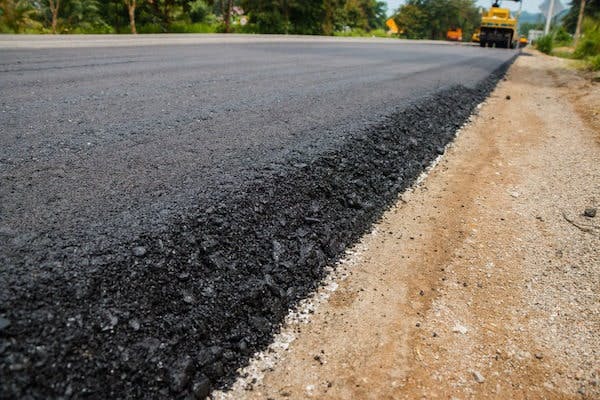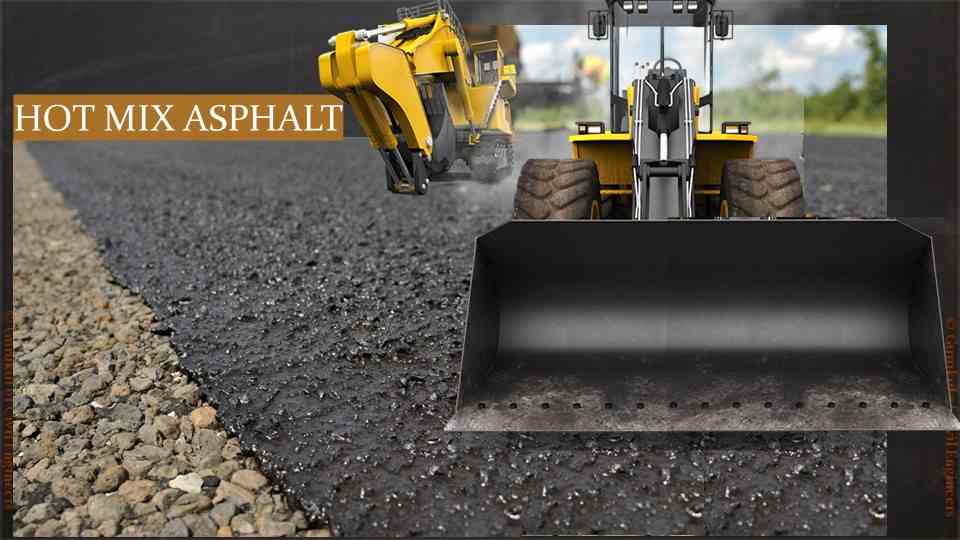Raise the Feel And Look of Your Residential Or Commercial Property with Expert Commercial Parking Whole Lot Paving
Raise the Feel And Look of Your Residential Or Commercial Property with Expert Commercial Parking Whole Lot Paving
Blog Article
Unlocking the Tricks of Warm Mix Asphalt Modern Technology
Exploring the midsts of warm mix asphalt technology reveals a globe where accurate solutions and careful processes assemble to shape our roadways and infrastructure. The fusion of accumulations, binders, and fillers isn't just a building job but a critical orchestration of sturdiness and efficiency.
Value of Hot Mix Asphalt
Warm Mix Asphalt plays a vital role in contemporary infrastructure advancement as a result of its toughness and cost-effectiveness. As the most frequently used leading material for roadways, highways, and parking area, Warm Mix Asphalt uses a series of advantages that add to its value in construction projects. One vital advantage is its ability to hold up against heavy web traffic loads and extreme weather, giving a dependable and resilient surface area for transport networks. Additionally, Hot Mix Asphalt is economical in both initial building and long-lasting upkeep, making it a recommended selection for many facilities jobs.
The toughness of Hot Mix Asphalt stems from its make-up, which consists of aggregates, binder, and filler products that are very carefully selected and mixed to fulfill certain performance needs. In general, the importance of Hot Mix Asphalt in infrastructure development can not be underrated, as it continues to be a cornerstone of contemporary construction techniques.
Parts of Asphalt Mixes
The composition of asphalt mixes includes carefully chosen accumulations, binder, and filler materials that are essential for attaining certain efficiency requirements. Accumulations are the primary element of asphalt mixes, supplying strength and security. These aggregates can be all-natural, such as gravel or crushed rock, or synthetic, like recycled products from old sidewalks. The binder, usually asphalt or asphalt cement, holds the aggregates together and supplies flexibility and toughness to the mix. The choice of the binder is crucial as it directly influences the mix's performance in various weather condition problems. Fillers, such as hydrated lime or Portland cement, are utilized to boost the mix's workability and aging resistance. Angled Parking.
The combination and percentage of these parts play a significant role in identifying the high quality and performance of the asphalt mix. Engineers thoroughly develop the mix to meet particular requirements, considering elements like traffic volume, environment problems, and sidewalk life-span. Appropriate choice and balancing of aggregates, binder, and fillers are important for creating long lasting, resilient asphalt sidewalks.
Combining and Manufacturing Methods

As soon as the accumulations are picked, the binder, usually asphalt concrete, is contributed to bind the products with each other. The binder's top quality and amount dramatically influence the mix's toughness, adaptability, and resistance to environmental variables. In addition, fillers like moisturized lime or Rose city cement may be incorporated to boost details attributes of the asphalt mix, such as its workability or moisture resistance.
Throughout manufacturing, the aggregates and binder are heated, usually between 250-325 ° F(121-163 ° C ), to assist in blending and make sure appropriate covering of the aggregates. The blending process must be thorough to attain an uniform mix that promotes the preferred performance characteristics of the asphalt. Numerous methods, such as batch blending or drum mixing, are employed to attain constant and high-quality asphalt mixes for building and construction jobs.
Variables Affecting Asphalt Performance
Factors influencing asphalt efficiency incorporate a variety of variables that influence the resilience, durability, and total quality of asphalt pavements. One crucial variable is the quality of materials utilized in the asphalt mix.

Environmental problems also affect asphalt efficiency. Temperature variations, dampness infiltration, and traffic lots can all affect the structural honesty of the pavement. Style factors to consider, such as pavement density and water drainage, are vital in ensuring the long-lasting efficiency of the asphalt sidewalk. By thoroughly taking into consideration these elements, specialists and engineers can enhance asphalt efficiency and boost the solution life of pavements.
Lasting Practices in Asphalt Modern Technology

Furthermore, the advancement of warm-mix asphalt (WMA) innovations has gotten grip in current years. WMA permits the production and placement of asphalt mixes at lower temperature levels contrasted to typical hot-mix asphalt, causing reduced energy intake and greenhouse gas discharges. The use of permeable asphalt mixes can aid mitigate stormwater drainage problems by permitting water to penetrate with the pavement and right into the ground, advertising all-natural water purification and charge processes. By carrying out these sustainable techniques, the asphalt sector can add to constructing a much more eco-friendly and resilient framework network.
Final Thought
Finally, hot mix asphalt innovation plays a vital Full Report duty in modern infrastructure development due to its durability and cost-effectiveness. By meticulously stabilizing elements, utilizing appropriate mixing a fantastic read methods, and thinking about different variables, designers can create top notch asphalt blends that withstand rush hour lots and rough weather. Welcoming lasting methods, such as utilizing recycled materials and warm-mix innovations, better boosts the ecological friendliness of asphalt modern technology.
Blending and production techniques in warm mix asphalt modern technology include the accurate combination and handling of aggregates, binder, and fillers to create a durable and high-performance asphalt mix.Aspects affecting asphalt efficiency encompass a range of variables that affect the durability, durability, and overall high quality of asphalt pavements. Sustainable methods in asphalt innovation incorporate different initiatives aimed at reducing the environmental effect of asphalt production and paving processes. By integrating recovered asphalt sidewalk (RAP) and recycled asphalt tiles (RAS) into new asphalt mixes, the industry can significantly lower the usage of raw products and energy, while likewise decreasing landfill waste.
WMA allows for the production and placement of asphalt blends at lower temperature levels contrasted to standard hot-mix asphalt, resulting in reduced energy consumption and greenhouse gas exhausts.
Report this page